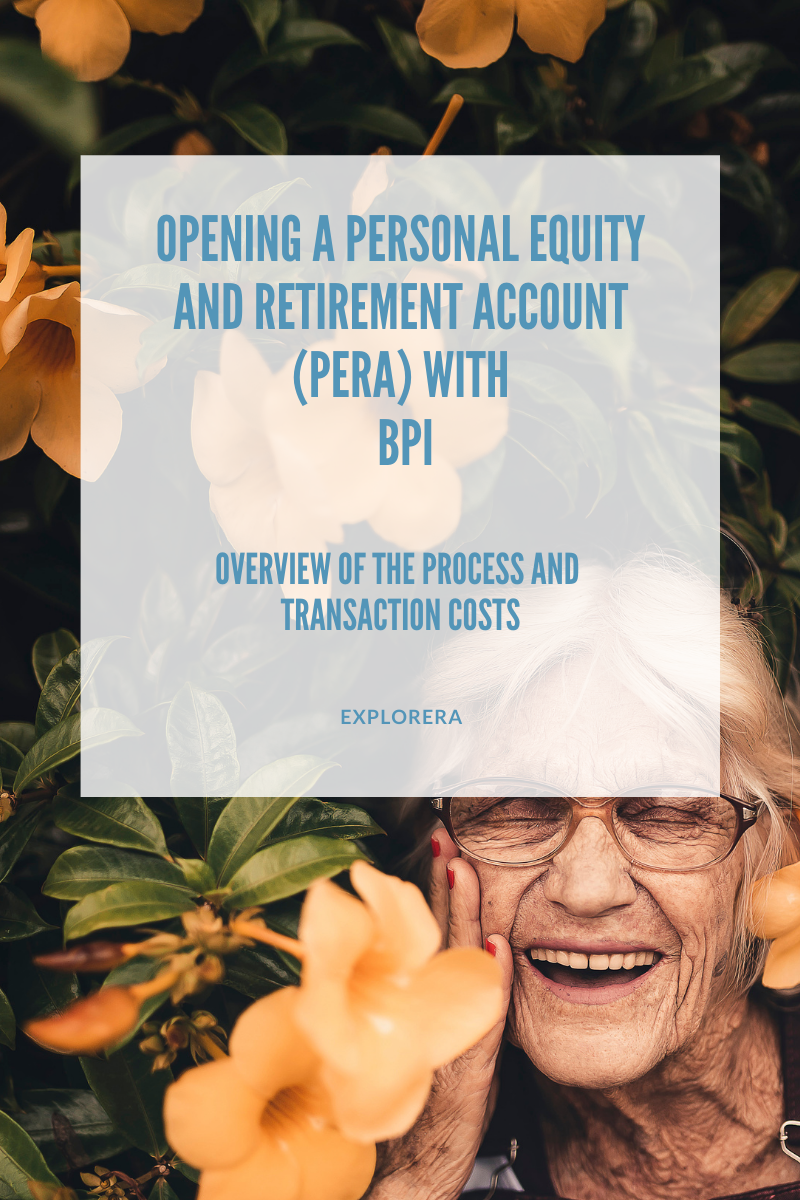To read a previous post where I share basic details on the Philippine Equity & Retirement Account, click here.
Early this year, I went to BPI’s main office in Makati to try to open a Personal Equity and Retirement (PERA) account.
A specific department handles the PERA accounts. Their staff patiently went through the details with me and answered all of my questions. I filled out and signed several documents. I also answered a risk assessment profile.
Their staff also explained the different types of accounts where you can put your money in. I was also asked to fill out a form to determine my investment risk profile (or your capacity and willingness to take risks). The assessment can help you and the PERA administrator determine which PERA product may be best suited for you.
While their staff can go through each investment type for you, I would suggest that you do a little bit of research beforehand about each fund’s pros and cons. This will help you absorb the avalanche of information (yes, that felt like information overload, even if I came a little prepared), and ask deeper followup questions. This, too, will help you make a more informed decision.
I had been doing a little bit of research on personal finance and PERA products before I went to BPI, so more or less, I already had an idea where I wanted to invest those funds. Since I am hoping to put my funds there for 20 years or more, I decided to go for an equity fund.
Still, I felt nervous. I was curious if, later on, I can invest the funds in PERA product. If I remember it correctly, the answer was yes.
Transaction Costs
The BPI staff also showed me the transaction costs. To give you an idea of the additional amount you need to prepare when opening your PERA account, I am posting a copy of the sample computation. (Note: The Php20,000 contribution amount in the table below is just their sample. So the 1% administration fee may be higher or lower depending on your contribution amount.)

Naming Your Beneficiary
You’d want to make sure that, in the event something happens to you, the money you worked for and invested will be put to good use. Think of this as ensuring that your loved ones are covered, especially if they are still studying or have medical needs. If you want to include a beneficiary, make sure to bring a copy of his/her valid ID.
If you already have a savings account with BPI:
Since I already had a BPI account, I asked that the amount (contribution amount and fees) simply be deducted from my account.
What happens after you open your PERA account?
You will receive an email from BPI regarding your account. Also, every quarter, BPI will send you an e-copy of your financial statement.
Time to save again!
Remember that the maximum yearly contribution amount is Php100,000 for non-OFWs and Php200,000 for OFWs. So if you haven’t reached the maximum contribution yet, just keep finding ways to allocate additional funds for your PERA account.
Have more questions?
You can contact BPI’s PERA administrators through these numbers posted on their website.
Happy investing! 🙂 ❤

